Mirella Sichirollo Patzer's Blog, page 39
June 17, 2012
MEMORIES OF ANASTASIA
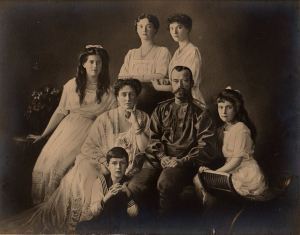 When
WhenI wrote Anastasia ten years ago there was still a lingering doubt about
whether she had survived the botched execution in which the rest of her
family were murdered. What was more certain was that the man who
organised this bloody episode, Yakov Yurovsky, was a couple of cadres
short of the full committee. He must have been off sick when they did
Assassination 101 at Secret Police School.
On
his orders, the family were herded into a basement and shot with
revolvers through the doorway by him and his men, the gunpowder from
their revolvers burning their eyes and creating a fog in the tiny room.
They had to fire over each other’s shoulders and Yurovsky claimed he
came out deaf in one ear.
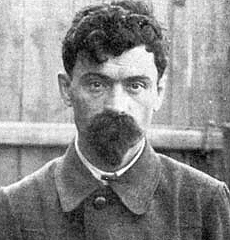
Yakov Mikhailovich Yurovsky
This
method was not efficient. Also, the women had hidden their jewels
inside their corsets and these acted as virtual bullet proof vests so
Yurovsky recorded that they then had to be dispatched with bayonets. It
was beyond brutal.
These
circumstances left open the possibility that someone survived this
bloody chaos. There were rumours (later proven false) that for days
afterwards the Bolsheviks searched trains in the Urals looking for a
young woman fitting Anastasia’s description.
For
years the story of the missing princess captured the public
imagination. Anastasia soon had more impersonators than Elvis Presley.
The most notable, Anna Anderson, pursued her case in the European courts
for over thirty years. After her death it transpired that she was not
only NOT Anastasia, she wasn’t even Russian.
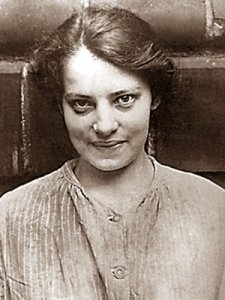
Anna Anderson
The remains of the Romanov family were finally discovered near Ekaterinburg in 1991. Intriguingly two skeletons were missing, those of a young woman and the boy, Alexei.
Even
then, it was impossible to imagine how Anastasia could have escaped,
even if she survived the gruesome debacle in the basement and was still
alive when they threw her on the cart with the rest of her family to be
buried in the forest. And Alexei; just impossible. He was a
haemophiliac. Any serious wound would have made death inevitable anyway.
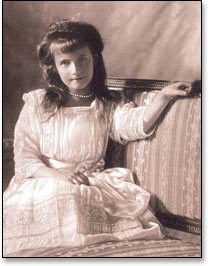
But
it wasn’t the mystery of Anastasia’s fate that motivated me to write
about her. It was a story I read in the newspaper about a man in
Liverpool, England who had been found unconscious in the street a year
before and was still languishing in a public hospital. He had severe
amnesia. Authorities published his photograph hoping that someone might
know who he was and come forward and identify him.
I
subsequently discovered that severe head trauma, when suffered
simultaneously with severe emotional distress, can bring about a rare
and long lasting amnesia. (The most famous - and saddening - case is
that of ‘Benjamin Kyle’ http://en.wikipedia.org/wiki/Benjaman_Kyle)
I
imagined that if Anastasia had survived, the shock of seeing her family
murdered and afterwards being battered with a rifle butt would have
turned her into another Benjamin Kyle.
This made me reflect on the nature of identity.
If we don’t have our memories then who are we? We still live and breathe, yes, but we no longer retain that which makes us ‘who we are’.
If we don’t have any remembrance, what is left of us?
For
the story, I imagined a woman appearing in Shanghai in 1920 suffering
from traumatic

Anastasia on Kindle
amnesia. People take her to be Anastasia - in order to
fulfill their own agenda. Over time she struggles to become the person
they want her to be - becoming someone else's idea seems better than
being no one at all.
Is
this what some of us do anyway - spend our lives becoming what others
want of us? If so, how do we then discover who we really are - so we can
follow our own course?
The
question of memory has become more poignant to me over the last year.
My mother is rapidly losing hers - sometimes she struggles to remember
the man who was her husband for 52 years. She even takes a while to
recognize me or my brother now.
Who
we are if we are not the memories we have accumulated and the name
someone gave us is an interesting question. It intrigued me far more
than whether Anastasia survived or not. She didn’t, by the way: in 2008,
two more skeletons were discovered, 200 yards from the original grave
site, and were positively identified as the missing two Romanovs.
But for me, it was the story of someone being cast adrift in the world without identity that made the story of Anastasia, the lost little girl, so utterly compelling.
See more history from Colin Falconer at LOOKING FOR MR GOODSTORY
I LOVE COMMENTS

From History and Women









Published on June 17, 2012 06:26
June 13, 2012
HOW DO YOU SOLVE A PROBLEM LIKE THERESE?
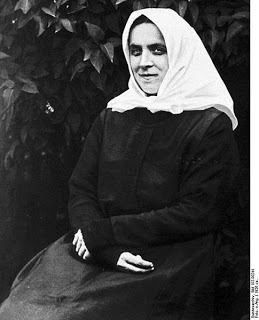
Deutsches Bundesarchiv, Bild 102-00241 Ferdinand Neumann
In the Sound of Music the nuns sang ‘How do you solve a problem like
Maria?’ It’s more likely the more pressing problem in the Alps around that time
was: ‘How do you solve a problem like Therese?’
Therese Neumann is a problem for skeptics, because she has never been
satisfactorily debunked; yet here is a modern-day stigmatic who insisted she
ate or drank nothing but the Eucharist for forty years.
Was it a miracle or Mass hysteria?

Walter J. Pilsak, Waldsassen
This extraordinary woman was born the in village
of Konnersreuth, Bavaria in 1898 to a poor farming family, the eldest of ten
children. From her youth, her nickname was “Resl.’ A sturdy girl, she claimed
that she could do the work of any man - and had the same appetite.
Her ambition was to become a missionary in Africa.
But her life changed in 1918 when she was partially paralyzed after
falling off a stool helping to put out a fire in her uncle’s barn. She
continued to try to work though, and this resulted in other falls, one causing
a head injury that resulted in blindness. She became bedridden.
But four years later, on the day a saint called Therese of Lisieux was beatified
in Rome, her eyesight was restored. Two years later, when this same saint was
canonized, she was cured of her paralysis as well.
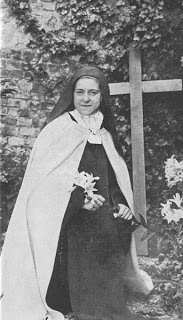
Therese of Lisieux
Later that same year she was diagnosed with appendicitis. She convulsed
while being prepared for surgery and afterwards asked to be taken to the church
instead of the operating room. She prayed to Saint Therese for her intervention
for a third time and afterwards said she was cured.
This alone is cause for head scratching. But Therese Neumann’s life was
to become even stranger.
On Good Friday in 1926 she claimed to have had visions of the entire Passion
of Christ. She then started bleeding from her side, her hands, her feet - even her eyes. A priest was summoned to
administer the Last Rites. But Theresa Neumann did not die. In fact, these same
symptoms reappeared for the rest of her life, every Easter.

During these trances this illiterate peasant spoke Aramaic. She later
developed nine more wounds, corresponding to the wounds from the scourging and
the Crown of Thorns. Because of the bleeding she wore a
head-cloth almost constantly, and this can be be seen in the many photographs
of her.
Not one of the
wounds ever healed, and it is said they were still imprinted on her body at the
time of her death.
For the next forty years she ate or drank nothing except the Eucharist.
No one believed her. In 1927, the Bishop of Regensburg, Antonius von
Henle, asked for a medical certification of the phenomenon. Therese was
observed around the clock under medical instruction for two
weeks by a medical doctor and four Franciscan nurses. The
attending physician, Dr. Seidl, testified under oath in
a Munich court on April 15, 1929, that there could be no question of Therese
having taken any nourishment during the period of observation.
He said she had consumed nothing except for one consecrated sacred host
per day and astonishingly, suffered no loss of weight, or dehydration.
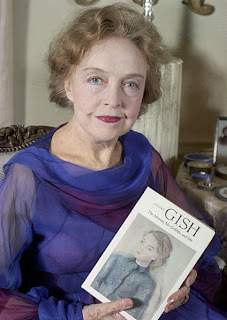
photograph: Allan Warren 1973
But this was not Jennifer Jones in Song of
Bernadette. In fact, the silent movie actress Lilian Gish painted a horrifying picture when
visited her in 1928, in preparation for a movie role about her life. She was
confronted with a short, pale, freckled woman with bad teeth sitting up in bed
with a bloodstained nightdress, dried blood congealed under her eyelids, bandages wrapped around her head and hands, describing Christ’s passion to
the Archbishop of Portugal.
She said that if she hadn’t been warned by
a priest what to expect, she would have fainted.
The Nazi party, of course, did not like Therese Neumann. They wanted to send
her to a mental home to be ‘cured.’ Her father wouldn’t allow it. Her family
home and her parish church were targeted for attacks but she survived the war
unscathed, despite her vocal opposition to Hitler.

photograph: Walter J Pilsak, Waldsassen
She
eventually died on 18 September 1962, from cardiac arrest. The Resi was largely ignored during her life by the church;
the Vatican is about ritual not mysticism. But a petition asking for her beatification signed by 40,000 people eventually forced the Bishop of Regensburg to open proceedings
for her beatification in 2005. Don’t expect news anytime soon.
What do we make of her? Was she a fraud -
if she was, no one has yet come forward with an adequate explanation of how she
produced so many wounds throughout her entire life; she was never caught in
forty years eating or drinking. Was she the most ingenious and stoic hoaxer who
ever lived?
If not, then how did the stigmata come
about - and how did she survive her inedia for so long? Was it supernatural
intervention - or did this illiterate peasant woman manifest such remarkable
events through the power of her own mind?
It’s a mystery that’s never been rationally
explained.
So - what do you think?

See more history
from Colin Falconer
at LOOKING FOR MR GOODSTORY
I LOVE COMMENTS

From History and Women









Published on June 13, 2012 06:24
June 6, 2012
TANGS FOR THE MEMORIES
She was one of the most extraordinary young women in Chinese and world history, but you
probably never heard of her.

Her story could have come straight from a Walt
Disney cartoon, The Little Mermaid in ancient China; there’s a good Dad, an evil
villain and the struggle for Utopia. What it doesn’t have is a handsome prince
and a happily ever after - at least not for our courageous princess.
Her name to history is Princess Pingyang.
She was one of eight daughters fathered by a man named Li Yuan, who had been born a peasant but had risen through the
ranks to become a general in the army of the evil Emperor Yang. (No, I’m not making
this up.)
Yang had taken the throne after having his father poisoned by hired assassins.
No less than six million people then died working on his plans to extend the Great Wall and the
Grand Canal - over ten per cent of the entire population. He was one of the most thoroughly unpleasant men in history; Donald Trump with
attitude.
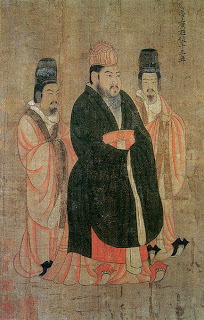
evil emperor Yang
Yang then invaded Korea and Vietnam, snatching defeat from the jaws of
victory despite overwhelming numerical superiority. He lost a million men
in those campaigns and bankrupted the empire. Then, to prove the
first time wasn’t a fluke, he did it a second time, this time with an army of
slaves, conscripts and paroled prisoners.
Li Yuan was one of the few military commanders to have fought with honor
and retained the respect of his men. So, true to character, Yang sent him into
exile .
With the Empire in shambles and the countryside ravaged by bandit gangs and
warlord armies, Li decided to revolt. He sent for his daughter Zhao and her
husband, Chai, who were unfortunately living inside Yang’s palace; Chai was commander
of the Emperor's Palace Guard.
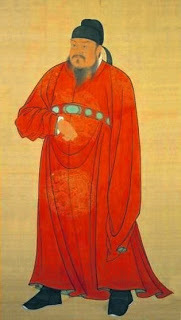
General Li Yuan
Zhao told her
husband: you go, don’t worry about me.
He said, oh all right then and took
off. The young woman then somehow avoided Imperial assassins and roving bandit
tribes and made it home to the family estates in Huxian.
Instead of feeling faint
and lying on the lounger waiting for Daddy to return from exile to rescue her, she
sold off her family's home and land and used the money to raise an army
- which became known as the
"Army of the Lady."
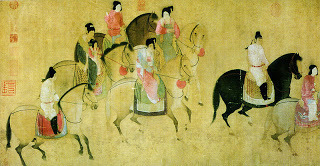
She was anything but ladylike. She approached local bandit leaders, and
offered them commissions in her new army if they joined her; if that didn’t
work, she bribed them. If any failed to be turned by her coy smiles and
fluttering eyelashes she routed their army, executed them and seconded their troops.
She played rough but she had a good heart. She forbade
raping and pillaging; instead she threw open her family’s rice stores and fed
the starving population. This hearts and minds policy won her massive support
and soon her army had swollen to a fighting force of over 70,000 warriors.
Yet still
Emperor Yang did not
take her army seriously - military genius that he was - because it was led by a woman, and one barely out of her
teens, at that.
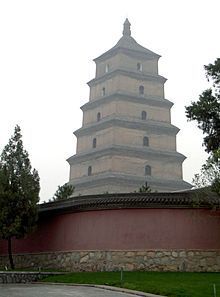
Late in 617, her father returned, crossing the Yellow River; so Pingyang joined
him, setting up her own separate headquarters. She then
joined the final assault on the Imperial palace at modern day Xi'an. General Li
seized the throne and declared himself Emperor, becoming the first ruler of the
Tang Dynasty.
It was a dynasty
that was to last three centuries, and is now seen as the high point in Chinese Imperial
civilization. China grew to become the largest
and most powerful empire on Earth. Philosophy, trade and the arts flourished.
Up until that time, women were little more than slaves, required to obey
their father before marriage, their husband during marriage, and their sons in
widowhood. But over the next hundred and fifty years China underwent dramatic
change. Women won the right to own land, to divorce and even to remarry.
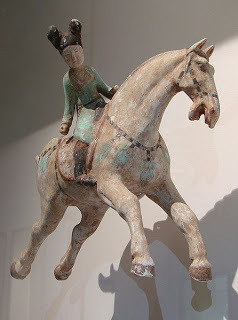
even the wearing of Mickey Mouse ears was legalised
A Tang Dynasty divorce agreement, unearthed from Dunhuang, reads:
"Since we cannot live together harmoniously, we had better separate. I
hope that after the divorce, niangzi
(a form of address for one's wife) can be as young and beautiful as before, and
may you find a more satisfactory husband. I hope that the divorce will not
plant hatred between us in the future."
So Princess Pingyang not only won the throne for her father - she helped win emancipation for
the sisters, too. Unfortunately she did not get the happy ending she also deserved. She
died at just 23 years old, two years after her father assumed the throne.
Her father gave her a military burial fit for a general; when officials of
the Ministry of Rites objected he said: "The Princess personally beat the
drums and rose in righteous rebellion to help me establish the dynasty. How can
she be treated as an ordinary woman?"
It was China's Renaissance. Lily feet, subservience and Mao Tse Tung were
still to come. But for three centuries China and Chinese women prospered, thanks to
one of the most extraordinary and courageous young women in history, riding at
the head of the Army of the Lady.
See more history from Colin Falconer at LOOKING FOR MR GOODSTORY
I LOVE COMMENTS

From History and Women










probably never heard of her.

Her story could have come straight from a Walt
Disney cartoon, The Little Mermaid in ancient China; there’s a good Dad, an evil
villain and the struggle for Utopia. What it doesn’t have is a handsome prince
and a happily ever after - at least not for our courageous princess.
Her name to history is Princess Pingyang.
She was one of eight daughters fathered by a man named Li Yuan, who had been born a peasant but had risen through the
ranks to become a general in the army of the evil Emperor Yang. (No, I’m not making
this up.)
Yang had taken the throne after having his father poisoned by hired assassins.
No less than six million people then died working on his plans to extend the Great Wall and the
Grand Canal - over ten per cent of the entire population. He was one of the most thoroughly unpleasant men in history; Donald Trump with
attitude.

evil emperor Yang
Yang then invaded Korea and Vietnam, snatching defeat from the jaws of
victory despite overwhelming numerical superiority. He lost a million men
in those campaigns and bankrupted the empire. Then, to prove the
first time wasn’t a fluke, he did it a second time, this time with an army of
slaves, conscripts and paroled prisoners.
Li Yuan was one of the few military commanders to have fought with honor
and retained the respect of his men. So, true to character, Yang sent him into
exile .
With the Empire in shambles and the countryside ravaged by bandit gangs and
warlord armies, Li decided to revolt. He sent for his daughter Zhao and her
husband, Chai, who were unfortunately living inside Yang’s palace; Chai was commander
of the Emperor's Palace Guard.

General Li Yuan
Zhao told her
husband: you go, don’t worry about me.
He said, oh all right then and took
off. The young woman then somehow avoided Imperial assassins and roving bandit
tribes and made it home to the family estates in Huxian.
Instead of feeling faint
and lying on the lounger waiting for Daddy to return from exile to rescue her, she
sold off her family's home and land and used the money to raise an army
- which became known as the
"Army of the Lady."

She was anything but ladylike. She approached local bandit leaders, and
offered them commissions in her new army if they joined her; if that didn’t
work, she bribed them. If any failed to be turned by her coy smiles and
fluttering eyelashes she routed their army, executed them and seconded their troops.
She played rough but she had a good heart. She forbade
raping and pillaging; instead she threw open her family’s rice stores and fed
the starving population. This hearts and minds policy won her massive support
and soon her army had swollen to a fighting force of over 70,000 warriors.
Yet still
Emperor Yang did not
take her army seriously - military genius that he was - because it was led by a woman, and one barely out of her
teens, at that.

Late in 617, her father returned, crossing the Yellow River; so Pingyang joined
him, setting up her own separate headquarters. She then
joined the final assault on the Imperial palace at modern day Xi'an. General Li
seized the throne and declared himself Emperor, becoming the first ruler of the
Tang Dynasty.
It was a dynasty
that was to last three centuries, and is now seen as the high point in Chinese Imperial
civilization. China grew to become the largest
and most powerful empire on Earth. Philosophy, trade and the arts flourished.
Up until that time, women were little more than slaves, required to obey
their father before marriage, their husband during marriage, and their sons in
widowhood. But over the next hundred and fifty years China underwent dramatic
change. Women won the right to own land, to divorce and even to remarry.

even the wearing of Mickey Mouse ears was legalised
A Tang Dynasty divorce agreement, unearthed from Dunhuang, reads:
"Since we cannot live together harmoniously, we had better separate. I
hope that after the divorce, niangzi
(a form of address for one's wife) can be as young and beautiful as before, and
may you find a more satisfactory husband. I hope that the divorce will not
plant hatred between us in the future."
So Princess Pingyang not only won the throne for her father - she helped win emancipation for
the sisters, too. Unfortunately she did not get the happy ending she also deserved. She
died at just 23 years old, two years after her father assumed the throne.
Her father gave her a military burial fit for a general; when officials of
the Ministry of Rites objected he said: "The Princess personally beat the
drums and rose in righteous rebellion to help me establish the dynasty. How can
she be treated as an ordinary woman?"
It was China's Renaissance. Lily feet, subservience and Mao Tse Tung were
still to come. But for three centuries China and Chinese women prospered, thanks to
one of the most extraordinary and courageous young women in history, riding at
the head of the Army of the Lady.
See more history from Colin Falconer at LOOKING FOR MR GOODSTORY
I LOVE COMMENTS

From History and Women









Published on June 06, 2012 02:17
June 4, 2012
The Secret Keeper: A Novel of Kateryn Parr by Sandra Byrd

Book Summary:
The author of To Die For returns to the court
of Henry VIII as a young woman is caught between love and honor.
Juliana St. John is the daughter of a prosperous
knight. Though her family wants her to marry the son of her father's
business partner, circumstances set her on a course toward the court of Henry
VIII and his last wife, Kateryn Parr.
Sir Thomas Seymour, uncle of the current
heir, Prince Edward, returns to Wiltshire to tie up his concerns with
Juliana's father's estate and sees instantly that Juliana would fit into
the household of the woman he loves, Kateryn Parr. Her mother agrees to have
her placed in Parr's household for "finishing" and Juliana goes,
though perhaps reluctantly.
For she knows a secret. She has been given the gift of
prophecy, and in one of her visions she has seen Sir Thomas shredding the dress
of the king's daughter, the lady Elizabeth, to perilous consequence.
As Juliana learns the secrets of King Henry VIII's court,
she faces threats and opposition, learning truths about her own life
that will undo everything she holds dear.
Review:
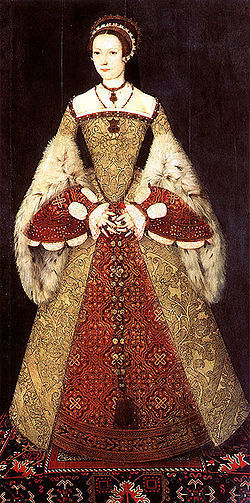
Queen Kateryn Parr
Sandra Byrd has written another
excellent novel. This time, the story is about Kateryn Parr, Henry VIII’s sixth
wife – one of his wives who survived marriage to the notorious, murderous monarch
who got rid of wives by way of the executioner’s axe. She died by natural causes.

I thoroughly enjoyed Sandra Byrd’s
interpretation of Kate Parr’s life. She is portrayed as a kind-hearted, generous,
and loving wife and mother figure with a strong faith, great patience, and high
tolerance for others’ shortcomings.
The story is told through the
voice of Juliana St. John. Juliana is no ordinary noblewoman. She has the gift
of prophecy through her dreams. When Sir Thomas Seymour spots Juliana, he
arranges for her to become lady in waiting to Kateryn Parr, the woman he loves,
and soon to be wife of Henry VIII. Kate’s trust in Juliana is profound and
their close relationship results in Juliana becoming her ‘secret keeper’. But
unbeknownst to Juliana, there are secrets about her own past that beg to be
exposed to her.
Sandra Byrd’s novels always
delight, and I found this one quite refreshing – about a lesser known Tudor
wife.
Mistress
Juliana St. John is the lovely, forthright daughter of a prosperous knight’s
family. Though all expect her to marry the son of her late father’s business
partner, time and chance interrupt, sending her to the sumptuous but deceptive
court of Henry VIII. There, Kateryn’s support of Anne Askew, a woman unwilling
to bend to new religious laws, puts her and her ladies lives in jeopardy.
This tale
nicely blends historical fact with fiction. The story is well-paced, well-written,
and a gentle read. Sandra Byrd’s extensive research about the Tudors is evident
in the rich details and descriptions. The conflicts Julian faces when having to
decide between love and duty and sacrifice kept me interested from start to
finish. And of course, the biggest secret of all is revealed in a highly
satisfying, but rather unusual ending. A thoroughly enjoyable book well worth
reading.
I LOVE COMMENTS

From History and Women









Published on June 04, 2012 15:43
June 1, 2012
Plastic Surgery Disasters
Top 10 Plastic Surgery Disasters
I've always believed that to age gracefully and with dignity is a path most women should take. However, with modern medicine, and the extreme pressure put on women these days, I can understand why women who can afford it opt for plastic surgery.
For me, the risk would be too high. I think I'll follow the path of women in history and let myself age naturally. It's what in the heart that really matters.
I LOVE COMMENTS










Published on June 01, 2012 11:44
May 30, 2012
ISABELLA: THE BRAVEHEART OF FRANCE
You may remember her, wet-eyed and winsome, in Braveheart. Mel, kilted
and blue in his role as William Wallace, enjoys a romantic interlude with her
in between defeating the invading Sassenachs of Edward Longshanks.

Sophie Marceau (20th Century Fox)
In real life she would have had them both for breakfast.
Isabella never met William Wallace, and she certainly never had his
child because she was about nine years old when he died.
Like Sophie Marceau in
the 1995 movie, she was beautiful, sophisticated and highly intelligent; but in character
she was more like Mel’s Mad Max. In fact, she later become known as the She-Wolf.
She was born in 1295 into the royal family of the most powerful kingdom
in Europe. The youngest daughter of Phillip le Bel (the handsome) of France,
she arrived in England when she was twelve to be married off to Longshank’s
son, Edward II.
Young Edward looked like a Plantagent king but he didn’t act like one;
he preferred jigs to jousting and poetry to pig hunting. Edward was on the downlow - contemporary chroniclers referred
to a ‘illicit and sinful union’ with his friend and adviser, Piers Gaveston. He
even chose to sit next to him at their wedding rather than with his new bride.
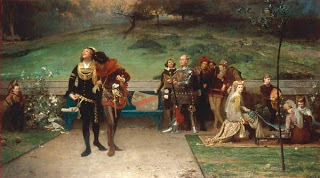
Edward and Gaveston ... and everyone else
She tolerated this; she was only twelve after all, and had no choice. The three lived out an uneasy truce until the King’s lover was murdered in 1312 in one of
the ongoing feuds between the king and his barons.
In 1314, after Edward was humbled by the Scots at Bannockburn, she took
up a more queenly role in the governance of the kingdom. But she soon had another
rival, when Edward found that a noble named Hugh Despenser the Younger had become ... well indispensable.
The country descended into chaos with the King and the Despenser family pitted
against the barons under Thomas of Lancaster. Isabella
and Hugh detested each other, but Edward sided with his favourite. He confiscated
all of his queen's lands, imprisoned her French staff and then her youngest children were taken
away and placed in custody by the Despensers.

photograph: Chris McKenna
The situation came to a head when the King left her stranded at
Tynemouth priory during another Scottish war, and the gutsy Isabella was forced,
along with a group of squires from her personal retinue, to hold off the Scots while
some of her knights commandeered a ship. It was a close call, and two of her
ladies in waiting were killed in the fighting. Once aboard, Isabella then evaded
the Flemish navy, and escaped.
Hell hath no fury.
Isabella went back to France in 1325 but instead of retiring to a
nunnery to mutter about the perfidy of men, she took matters into her own hands. She began a
passionate affair with an exile named Roger Mortimer - in fact, it’s said she
already knew him, and that she sprang him from the Tower in 1523 after he’d
been arrested by the Despensers.
This was a huge risk for her - female infidelity, even in the face of
such provocations, was a very serious offence in medieval Europe. Their
romance has been described as one of the great romances of the Middle Ages. It may have been -
but the pillow talk was all about settling old scores.
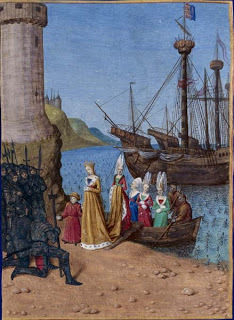
Isabella and Mortimer returned to England in 1326 with a mercenary army,
and defeated Edward in a lightning campaign. Edward and Hugh were arrested after
they fled to Wales. Hugh Despenser was dispensed with in a very medieval manner.
He was stripped and had Biblical verses about the evils of corruption and
arrogance scrawled on his skin prior to his grisly execution (see the rather
cheery illustration below.)
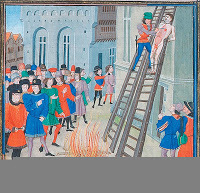
The king was invited to abdicate the throne and was then placed under house
arrest at Berkeley Castle on the Welsh borders, where he later died trying to
escape custody, as we would say in modern parlance. There is still much
controversy over the circumstances surrounding his disappearance.
The queen then ruled as regent for her son, but even the She-Wolf could
not protect herself against her own cub; five years later he came of age and
took back the crown, and it was Mortimer’s turn on the gallows.
Isabella survived the transition however, and retired from politics to
spend more time with her family. She continued a lavish lifestyle at Castle
Rising in Norfolk, doting on her grandchildren, one of whom was Edward, the
Black Prince. She took to religion, continued to be a gregarious member of the court, and
remained on good terms with her son.
This complex, courageous and indefatigable woman died an old lady in
1358, remaining an enigma until the end. She asked to be buried in her wedding
dress and Edward's heart, which had been placed into a casket after his death thirty years before, was
interred with her, at her request.
She remains one of the most remarkable women of medieval history; a true
braveheart, in fact.
See more history from Colin Falconer at LOOKING FOR MR GOODSTORY
I LOVE COMMENTS

From History and Women









Published on May 30, 2012 04:30
May 28, 2012
Days of Splendor, Days of Sorrow by Juliet Grey
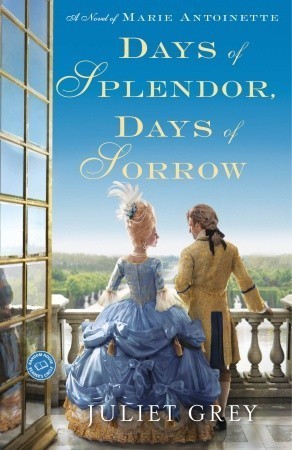
An intimate peek into the life of the infamous Marie Antoinette, Dauphine and Queen of France!
Book Description:
Paris, 1774. At the tender age
of eighteen, Marie Antoinette ascends to the French throne alongside her
husband, Louis XVI. But behind the extravagance of the young queen’s elaborate
silk gowns and dizzyingly high coiffures, she harbors deeper fears for her
future and that of the Bourbon dynasty.
From the early growing pains of marriage to the joy of conceiving a child, from
her passion for Swedish military attaché Axel von Fersen to the devastating
Affair of the Diamond Necklace, Marie Antoinette tries to rise above the gossip
and rivalries that encircle her. But as revolution blossoms in America, a much
larger threat looms beyond the gilded gates of Versailles—one that could sweep
away the French monarchy forever.
Review:
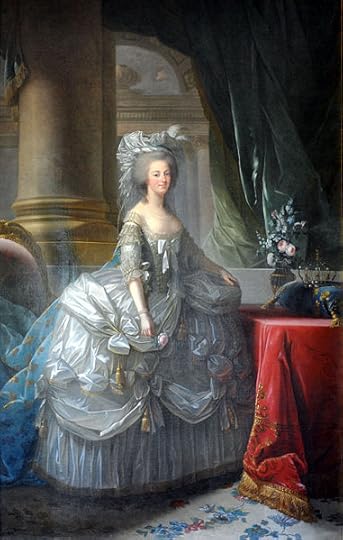
Days of Splendor, Days of Sorrow by Juliet Grey is the second novel of a trilogy based on the life of Marie Antoinette. The first book in the series was entitled Becoming Marie Antoinette. This second book focuses on the early years of Marie Antoinette’s reign as Queen of France and spans fifteen years of her life. It explores the development and evolvement of the French people’s animosity towards their monarch in the years leading up to the French Revolution.
When it comes to Marie Antoinette, I continue to be fascinated by her story. There have been numerous novels written about
the life of this fascinating woman. What makes this book different than the
others is that it portrays Marie Antoinette in neither a good light nor bad.
Juliet Grey has done a marvellous job of showing us her faults and errors, as
well as her naïveté and inexperience in a non-judgmental way. And because her
life story is presented in a trilogy format, readers are able to understand
this heroine in a deeper, more meaningful way. An example of this is how the
author dealt with Marie’s affair with Axel Ferson – she portrayed the passion,
guilt, and shame intricately and in a way that truly makes the young, unhappy
queen seem real and vulnerable. Her foolishness in relentlessly gambling away
money was portrayed very well – the losses were truly astounding – and her lack
of remorse or worry truly shows us many of her less desirable qualities. Her
frivolous spending was depicted as well as some of the queen’s more generous
acts of charity or kindness. The novel is told in first person narrative in
Marie’s voice. This engaging voice, coupled with vibrant descriptions of
clothing, palaces, masques, and dinners, really thrusts the reader into the
story.
Although I did not have the opportunity to read
the first book in the series, I was able to follow the story easily without
having to struggle to remember characters and situations. Power and great wealth
can truly corrupt, especially in the hands of a very young woman thrust into
the role of queen. For those wishing an indepth interpretation of Marie
Antoinette’s life, this trilogy is perfect. Exceptionally well done!
I LOVE COMMENTS

From History and Women









Published on May 28, 2012 14:58
May 27, 2012
Book Giveaway - The Reckoning by Alma Katsu

Win a copy of The Reckoning by Alma Katsu!
Alma Katsu has asked me to forward this on to my readers! Enter to win a copy of her new release - The Reckoning.
"After receiving this box of finished copies of The Reckoning, I thought I'd have a quick contest in honor of the holiday weekend. I'm giving away one copy and will ship internationally. Folks can enter by emailing me at contest@almakatsu.com and I must receive entries by midnight PT, May 28.
The winner will receive the book BEFORE IT GOES ON SALE June 19th. Quick and easy peasy!
I LOVE COMMENTS
 From History and Women
From History and Women








Published on May 27, 2012 17:24
May 25, 2012
Elizabeth Murray, Lady Tollemache, Duchess Lauderdale

Elizabeth Murray, Duchess Lauderdale 1628-1698
Whilst searching for a strong female protagonist from the 17th Century on whom to base my novel, I discovered one practically on my own doorstep. I lived literally round the corner to Ham House, a stunning red brick Jacobean mansion on the River Thames, the home of Elizabeth Murray, Lady Dysart and Duchess of Lauderdale. Her second husband, John Maitland, Duke of Lauderdale, was one of the infamous CABAL of King Charles II, and between them, this couple turned Ham House into a palace fit for their king.
Bishop Burnet, described by Elizabeth’s biographer, Doreen Cripps as ‘that spiteful old busybody’, left a sketch of her character coloured with his prejudice and personal malice.
She was a woman of great beauty, but of far greater parts. She had a wonderful quickness of apprehension, and an amazing vivacity in conversation. She had studied not only divinity and history, but mathematics and philosophy. She was violent in every thing she set about, a violent friend, but a much more violent enemy. She had a restless ambition, lived at a vast expense, and was ravenously covetous; and would have stuck at nothing by which she might compass her ends. She had blemishes of another kind, which she seemed to despise, and to take little care of the decencies of her sex.
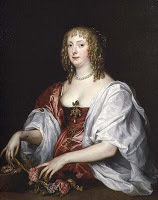
Catherine Bruce Murray
During the English Civil War, Catherine Murray took seventeen-year-old Elizabeth and her three younger sisters to the exiled Court at Oxford during the winter of 1643/1644, where Charles I had fled after the Battle of Edgehill, where Elizabeth saw firsthand how difficult life had become for many followers of the king.
Elizabeth’s father, William Murray, Earl Dysart, was arrested for spying for the Royalist cause, acquitted after months in the Tower of London, but banished to Queen Henrietta Maria’s court outside Paris. Despite his dangerous disgrace, Elizabeth’s formidable mother, Catherine Bruce Murray, invited Cromwell to dine at Ham House when King Charles I was under house arrest at Hampton Court, a mere five miles downriver.
Elizabeth apparently charmed Oliver Cromwell with her wit and intelligence, and they remained in contact, even though during King Charles II’s exile in the 1650’s, Elizabeth was reputedly a member of The Sealed Knot carrying money and information to the exiled king.
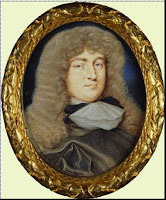
Duke of Lauderdale
That meeting between the Royalist girl and the Colonel in Chief of the Roundhead army must have been a difficult one, for several attempts had been made by them to seize Ham House and the family's estate, threatening to leave them all homeless. There is no evidence that Elizabeth or her family were involved in the plan to help Charles I escape Hampton Court, but escape he did and some of their friends were involved, including the Earl of Lauderdale, and yet no Murrays were arrested.
It was a tribute to Elizabeth's diplomacy, that when she pleaded with Cromwell for the life of John Maitland, Earl Lauderdale, captured after his participation in the Battle of Worcester in 1651, it surprised many when his sentence of death was commuted to imprisonment.
Elizabeth married Sir Lionel Tollemache 2nd Bart in 1648, a non political Suffolk landowner who attracted either Royalist or Parliamentary attention. The marriage was a successful one, and secured Ham House for Elizabeth, who bore him eleven children in twenty two years, five of whom lived to adulthood. Lionel died in 1669, and Lady Anne Lauderdale went to Paris, apparently having fled to distance herself from the burgeoning friendship between her husband and Elizabeth.
Lady Anne died in 1672 and six weeks later, to the outrage of London society, John Maitland, Earl of Lauderdale and Lady Elizabeth Tollemache were married.
It wasn’t until her forties, when Elizabeth’s political manoeuvrings as Duchess Lauderdale were frowned upon, that she was rumoured to have been not only Earl Lauderdale's mistress when they were both married to other people, but also Oliver Cromwell's, and she was suspected of spying for both sides during the Interregnum:
She is Besse of my heart, she was Besse of old Noll;
She was once Fleetwood’s Besse, now she’s Bess of Atholle;
She’s Besse of the Church, and Besse of the State,
She plots with her tail, and her lord with his pate.
With a head on one side, and a hand lifted hie,
She kills us with frowning and makes us to die.
‘Royalist Rebel’, by Grace Seymour, a biographical novel of Elizabeth’s youth will be released in paperback by Pen and Sword books in early 2013.
I LOVE COMMENTS

From History and Women









Published on May 25, 2012 17:38
Welcome Lisa Yarde and Anita Davison
I have two more exciting new members who have joined me on this blog to announce:
American historical fiction author Lisa J. Yarde

English historical fiction author Anita Davison

Long time mentors of mine, I have admired their work for several years. With Colin Falconer from Australia and me from Canada, we definitely are an international group scattered around the world.
Look for some exciting future posts! Welcome ladies!
I LOVE COMMENTS

From History and Women










American historical fiction author Lisa J. Yarde

English historical fiction author Anita Davison

Long time mentors of mine, I have admired their work for several years. With Colin Falconer from Australia and me from Canada, we definitely are an international group scattered around the world.
Look for some exciting future posts! Welcome ladies!
I LOVE COMMENTS

From History and Women









Published on May 25, 2012 10:11



